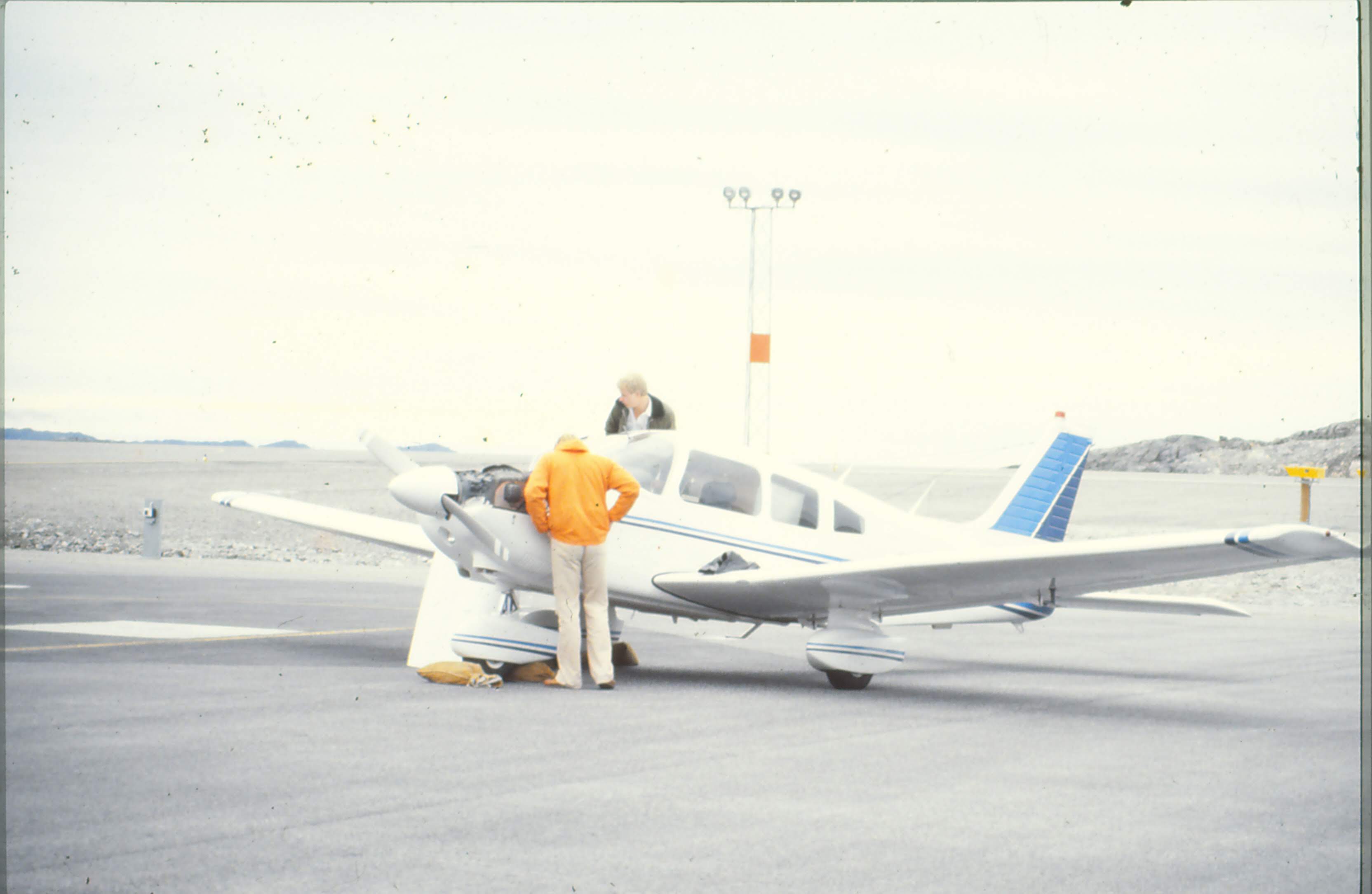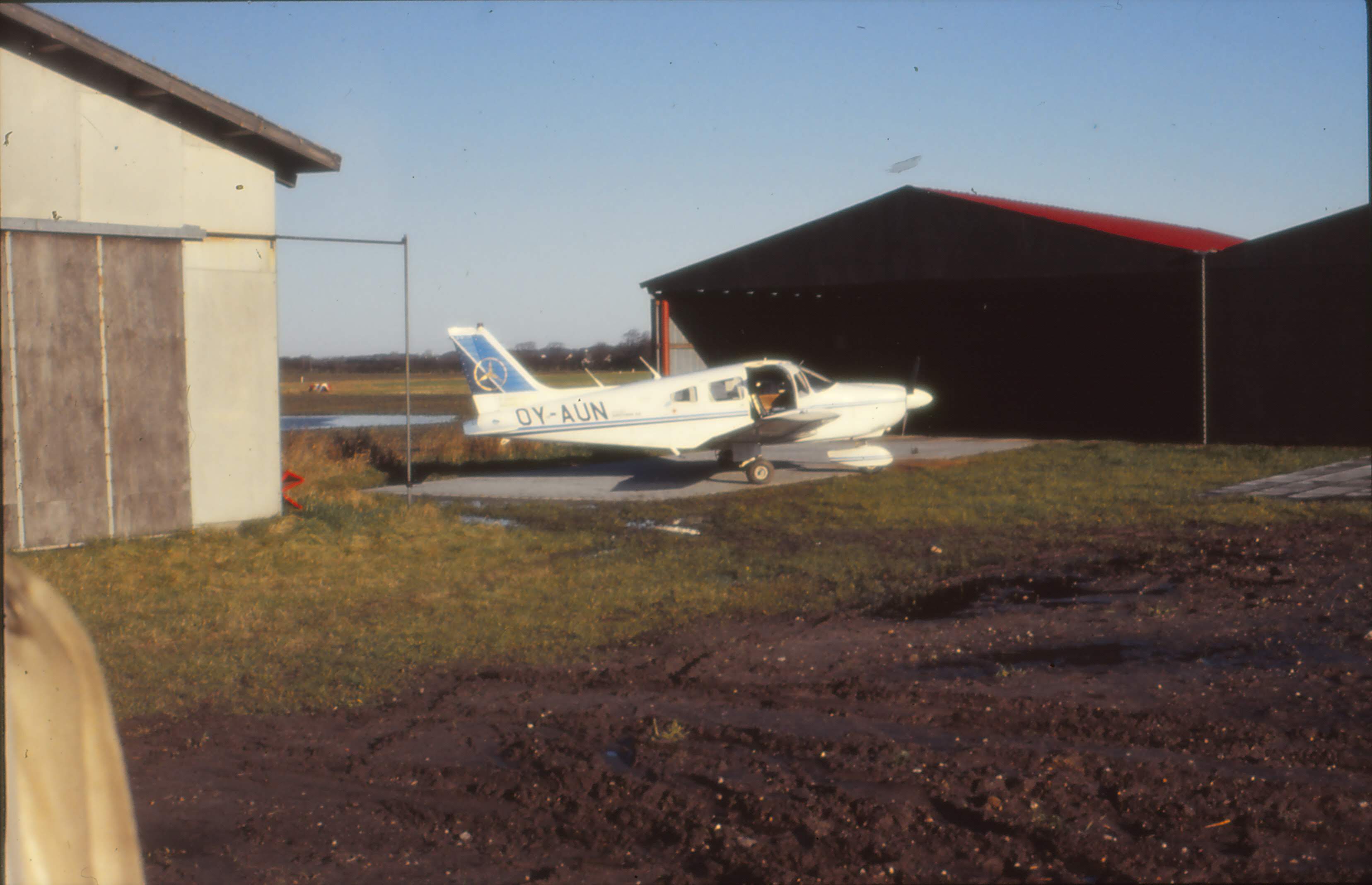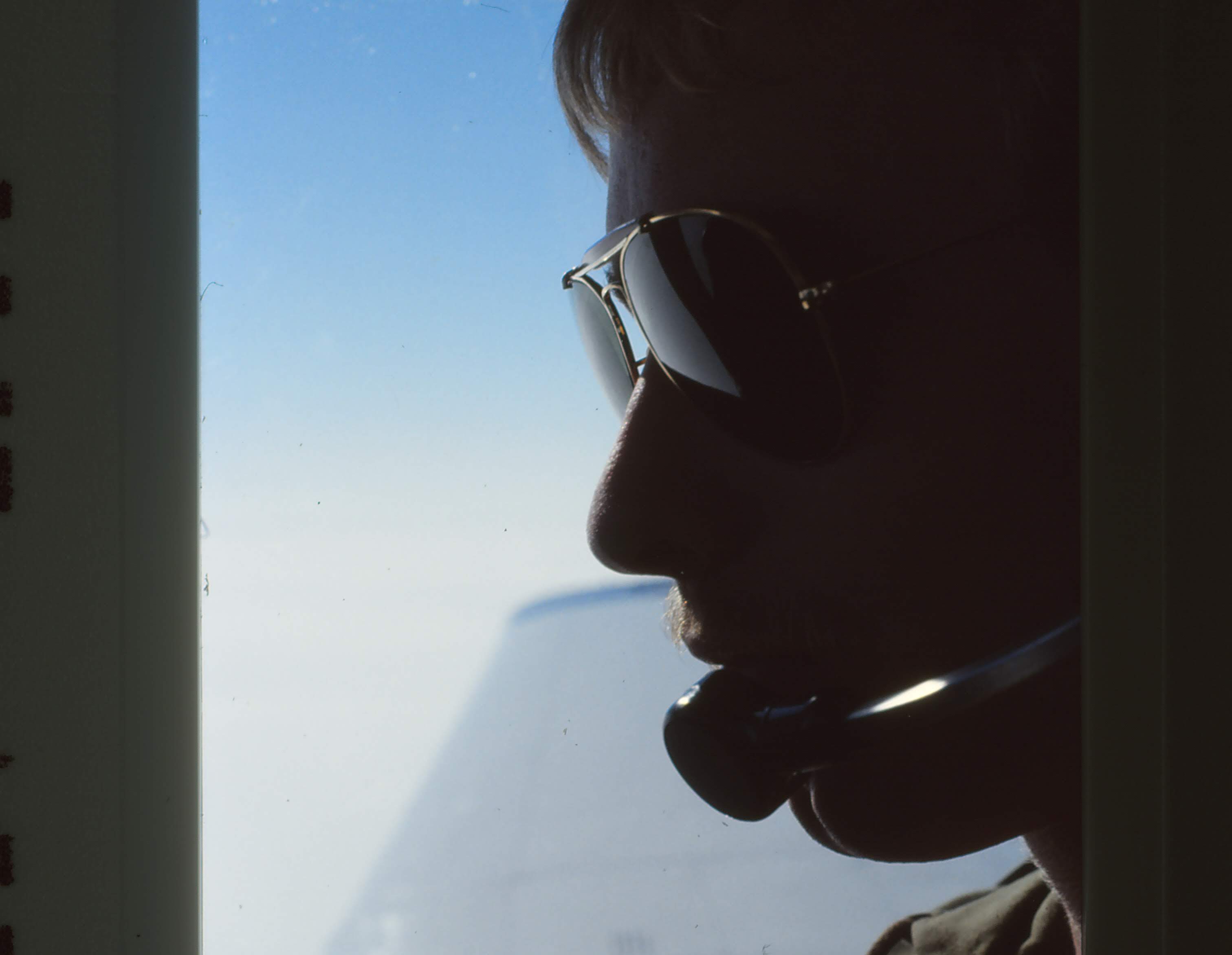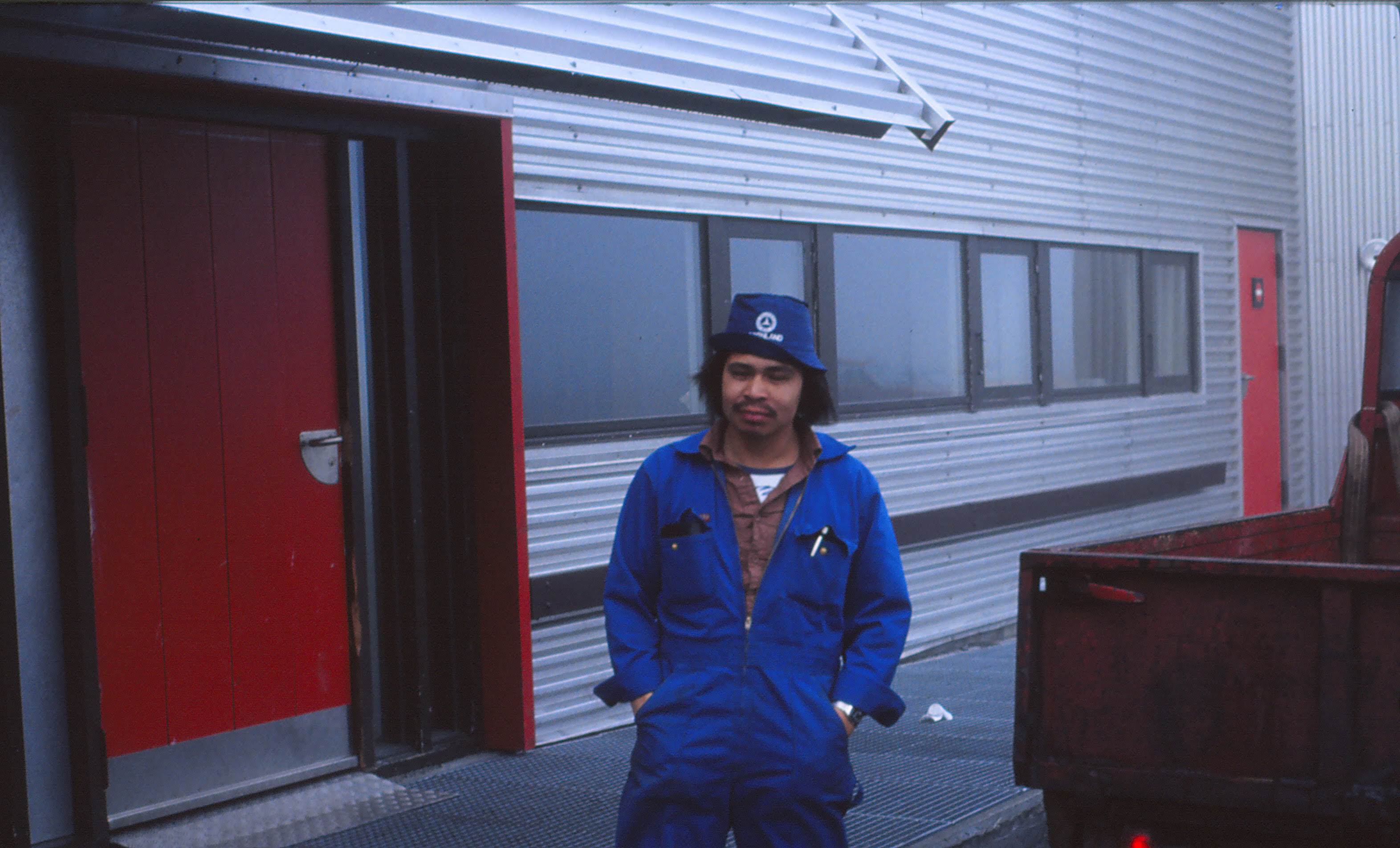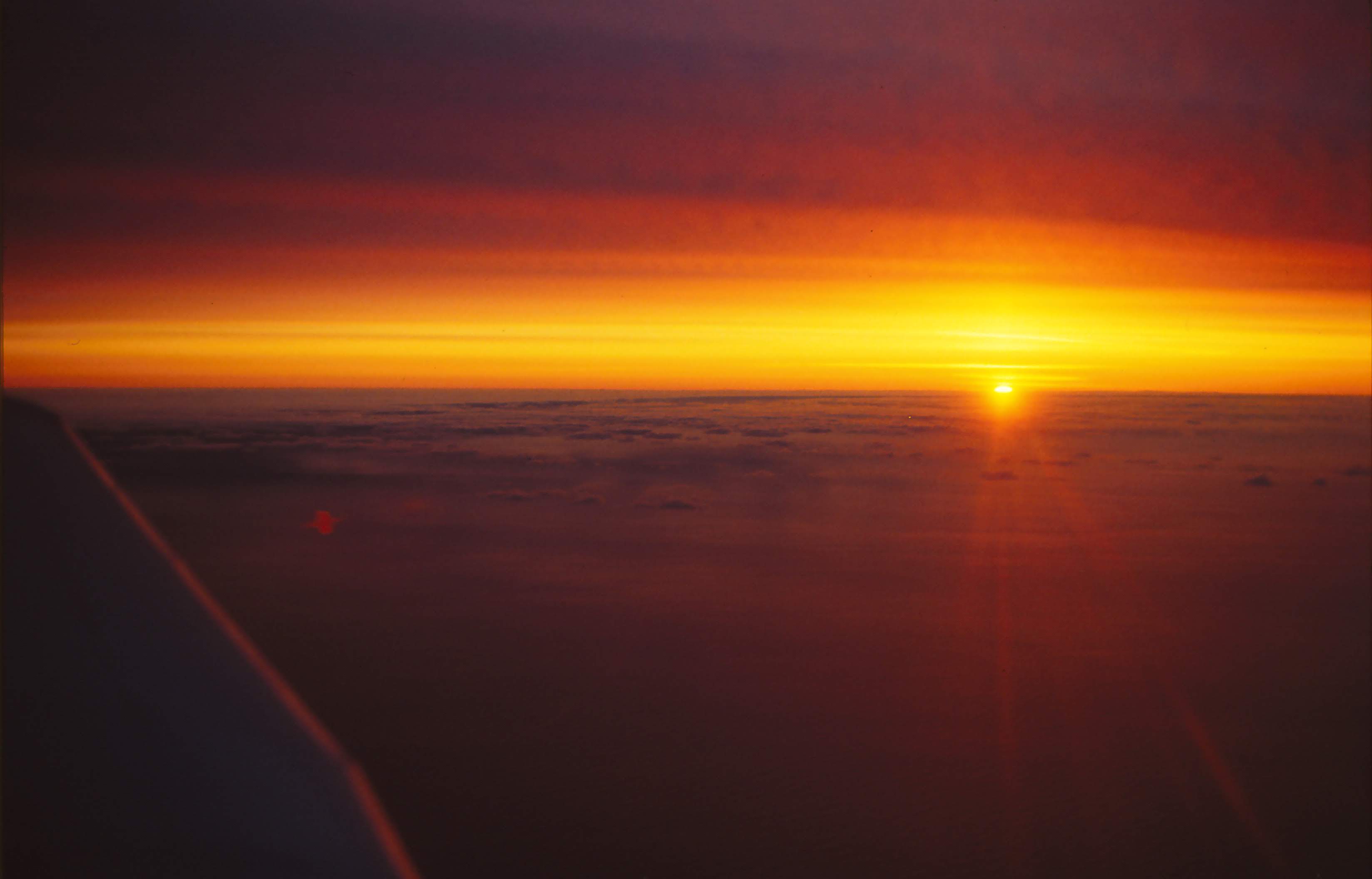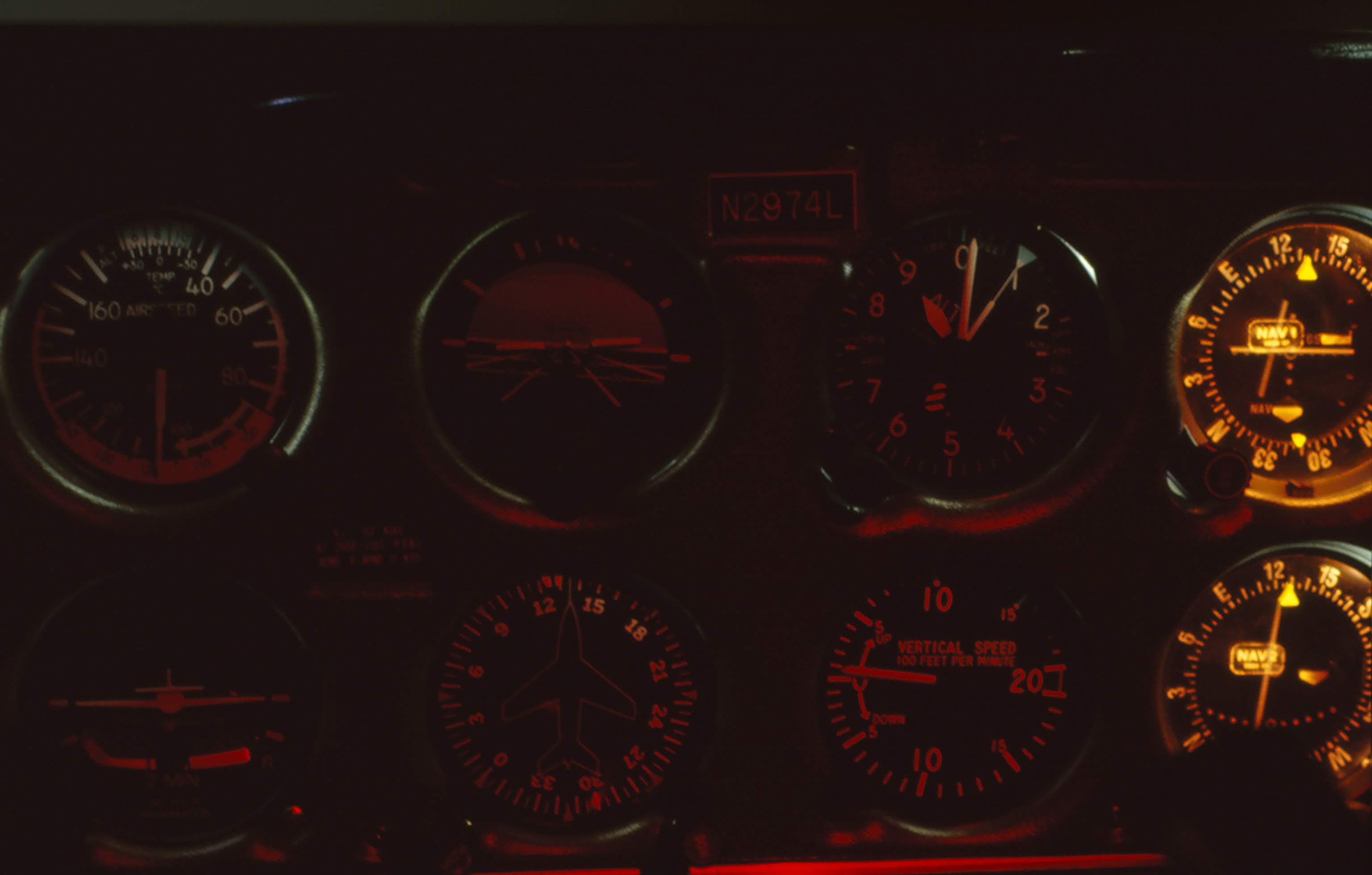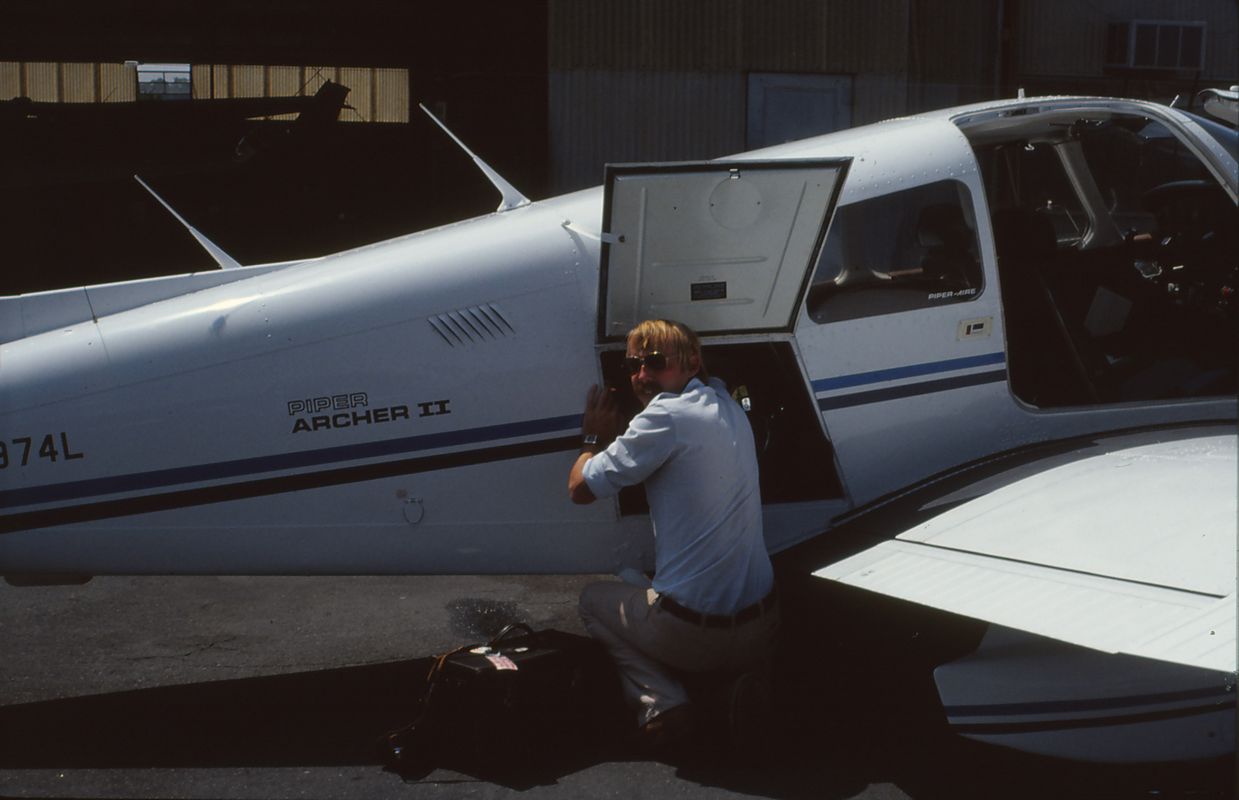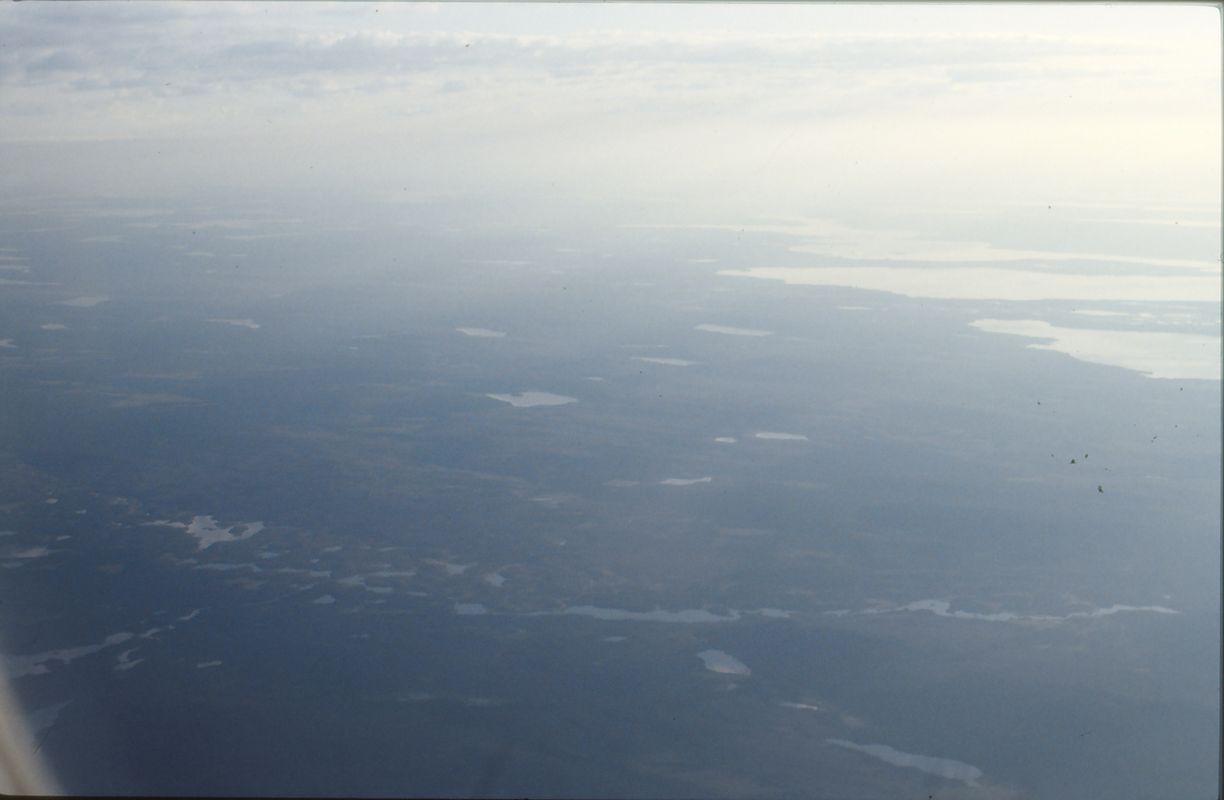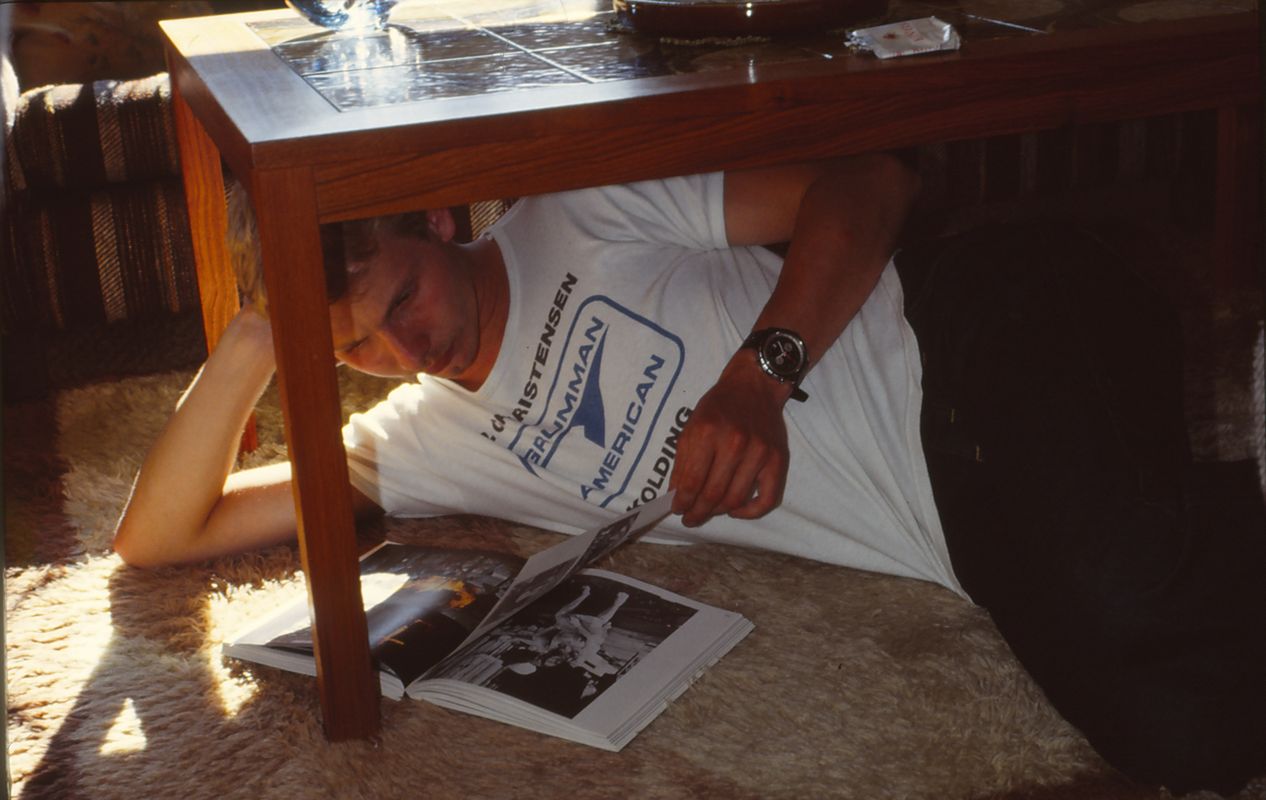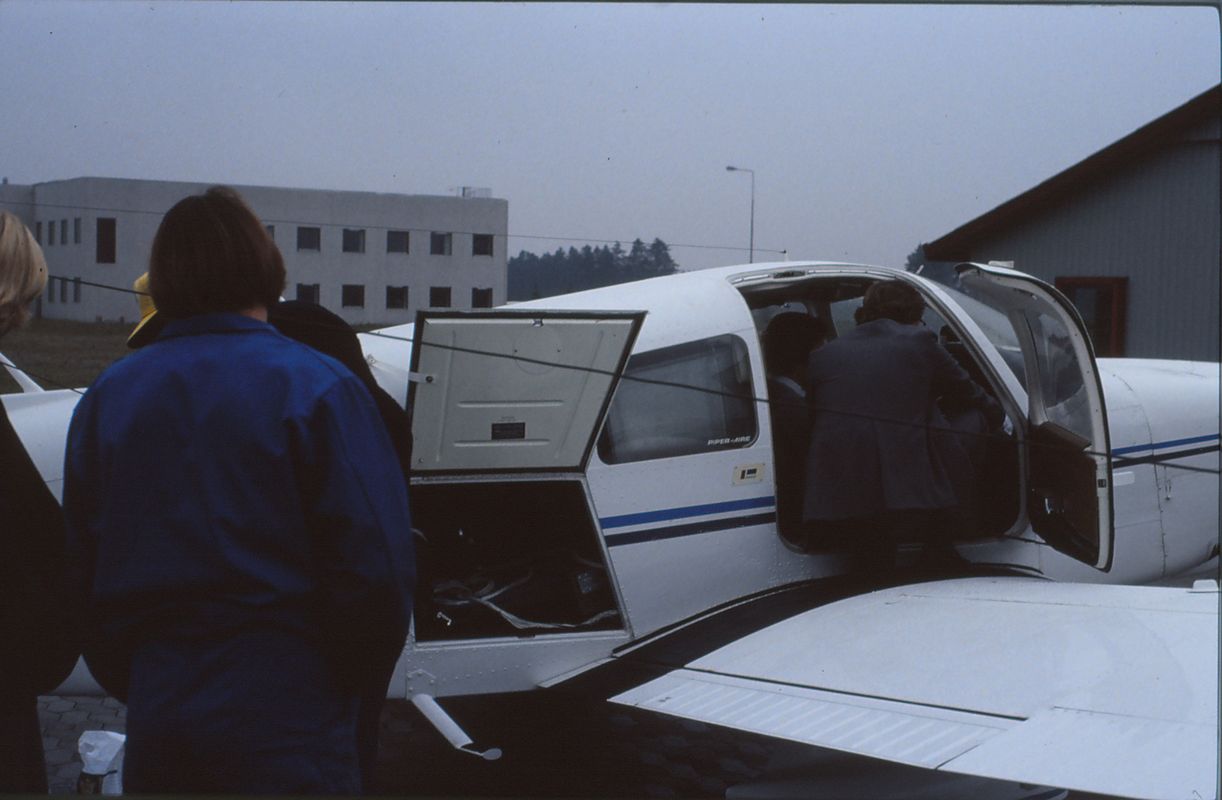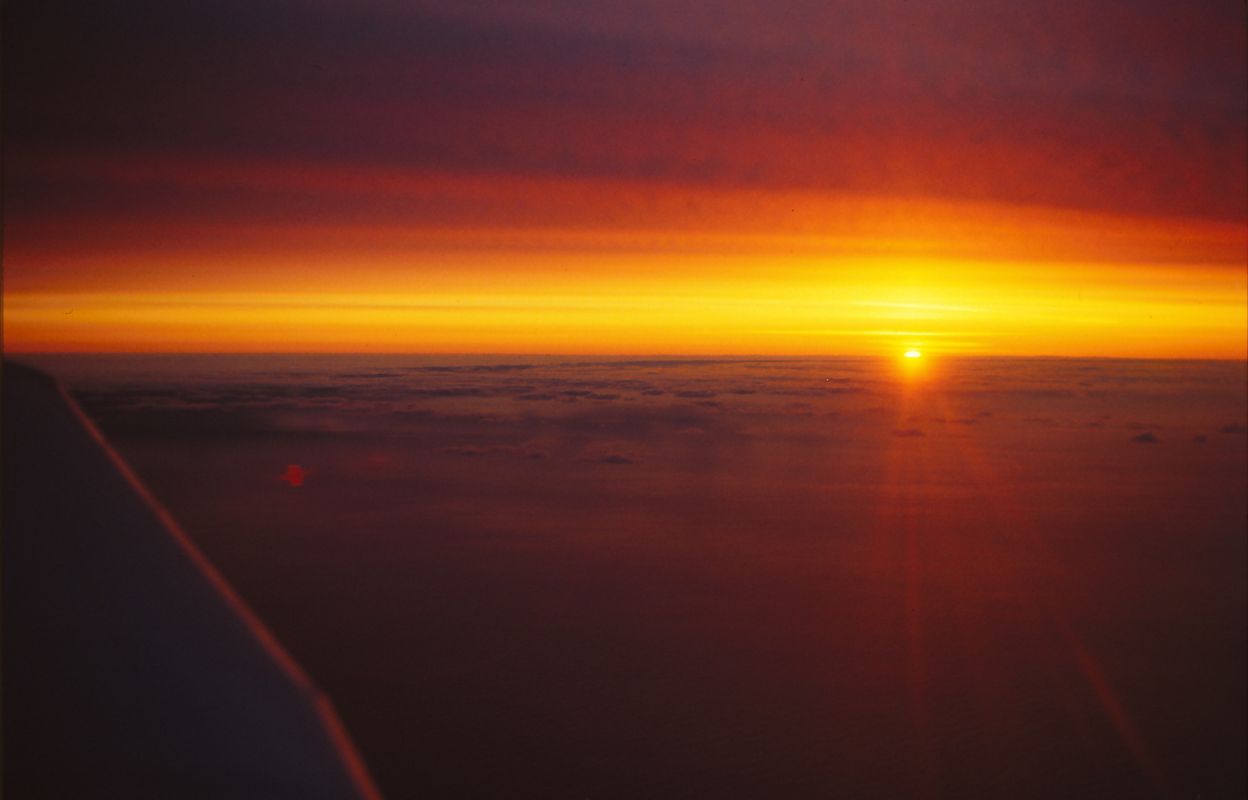 Atlantic flight Charlotte USA to Denmark via Greenland and Iceland.
Atlantic flight Charlotte USA to Denmark via Greenland and Iceland.
Charlotte 20.08.80 to Loch Haven. Total flight time 3:30 hours Pilot Christian.
Loch Haven 21.08.80 to Sept. Isles. Total flight time 6:14 hours Pilot Christian
September Isles 22.08.80 to Nuuk/Godthåb Total flight time 9:29 hours Pilot Morten
Nuuk/Godthåb 25.08.80 to Keflavik Total flight time 7:39 hours Pilot Morten
Keflavik 25.08.80 to Reykavik Total flight time-Reykavik 25.08.80 to Billund 26.08.80 Total flight time 9:45 Pilot Christian
A total of 36:15 flight hours.
See pictures from the trip below.
We arrived in Charlotte, bringing a VHF radio, map, swimsuit, passport, flares, money and a lifeboat.
We had the plane reviewed
Type: Piper PA-28-181 Archer II
Construction number: 28-8090021
Year of manufacture: 1979
Year of registration-cancellation 1980 ICAO; P28A
Notes: N2974L, OY-AUN"}N2974L and I had money transferred to Thurston Aviation USA.
It was a fantastically beautiful plane and we had no doubt that it could handle the trip across the Atlantic.
On 20/08/1980 we started from Charlotte with a climb up to 11,000 feet, which was no problem with the 180 hp engine humming out front.
We were now troubled by a front and we decided to fly through it.
It was now more difficult than we had dreamed of. Upward and downward winds sent us up and down in the clouds, unable to see anything but the milky white outside the plane's windows.
The turbulence was so intense that I controlled the plane's rudder and Morten controlled the engine revolutions. meanwhile, we were tossed around at speeds up to 160 knots on the plane's speedometer. It was so crazy that when we were thrown down, even though we were flying up, the altimeter still turned down.
Finally out of the front we could let off some steam.
Towards evening we approached Loch Haven, the airport, which is situated in a valley.
The next few days were hectic getting the plane ready for the Atlantic flight.
The VHF radio had to be fitted and the 90 gallon fuel tank had to be fitted with wires where the rear seats were otherwise fitted, the rear seats were pushed all the way back in the cabin. I could quickly see that there would not be much room for Morten and I.
The artificial horizon "hung" approx. 5 degrees to one side where it should be in a horizontal position.
The instrument was adjusted a bit and everything should be fine.
We wondered if the plane would be too overweight with the total of 140 gallons of fuel, two pilots, emergency equipment, an almost empty 5 gallon oil can to pee in, and a packet of crackers; as well as water. A calculation was made, and as far as I remember there was max. 20% excess weight, which could be allowed on ferry flights.
The starting process would be reasonably long, but not a problem.
So it should be if there was no more track to start on.
Then I also think that Morten and I would not have the slightest chance of surviving a trip beyond the end of the runway, or just an emergency landing in the countryside with all that fuel.
So we agreed not to use survival suits, as they would only be a nuisance to us.
We got the plane refueled, which was a bit of a hassle on the 50 gallon fuel tank in the cabin, as the filler neck was right inside the plane door. There was so much weight that the plane's door hit the surface of the wing when it opened, which could not happen with a lower weight. We were aware that the aircraft could easily be overstressed by incorrect treatment, and the undercarriage could collapse or be damaged.
Late in the day we were getting ready for the Atlantic flight.
It was evening when we got ready in the little cabin. The lifeboat was placed between our legs. There was no room elsewhere. Engine test was done and everything worked as it should. Slowly I pushed the throttle forward and very slowly the plane started to move down the runway. When the speedometer read 80 knots, I slowly raised the aircraft's nose wheel. The sun was almost gone when the little white plane slowly lifted off the ground and, like a great buzzard, fought its way up to a greater height.
The plane's instrument lights shone in our eyes while it was getting dark outside. The engine hummed sweetly and gradually we reached the 9000 feet where the plane was trimmed, the course set for Sept. Isles in Canada. The VORén was set up and the autopilot switched on and now Morten and I were in our own world.
Now it all depended on the N2974L doing what it was supposed to do.
Good thing I didn't have to fly this trip alone. And Morten was probably the best ferry pilot that could be found in Denmark. He was an experienced pilot, and had tried to fly small planes across the Atlantic before. But as he said: "I have never flown a plane with such a small engine and with an extra person on board".
All night we flew through the black nothingness. Below us there were interspersed lights from the cities which told us that we were not completely alone. We didn't talk much during the night flight. Just staying awake was hard. Finally, sunbeams were sent over the horizon, and before shelter
We reached Killinik Island and said goodbye to Canada, we thought. We were on our way across the cold water between Canada and Greenland. 2 minutes in the water and you would be dead. That is, if we survived an emergency landing on water. The frequency of the VHF radio was set to Canada and Morten called, which we had to, so that the Canadian authorities knew we were ok before we left their territory. We were aware that we had 30 minutes to make contact, otherwise a search would be launched for us. I must add that we had signed a contract with the authorities stating that if we were missing, the authorities would only do a minimal search, as we would have to pay for it ourselves. Yes Yes. If we died it wouldn't matter.
Morten and I looked at each other. No answer on the radio. We called again and still no answer. Now it was about to become a big problem, since the authorities wanted to launch a search soon. 5 minutes before the big alarm would have triggered the search, Morten caught a passenger plane above us and told them about our problem. As they were somewhat higher than us, they were able to contact Canada and tell us that we were ok, and would leave their area and frequency. We were relieved and now set the aircraft's "ADF" "Automatic direction finding (ADF) is an electronic navigational aid that identifies the relative bearing of an aircraft from a radio beacon transmitting in the MF or LF bandwidth, such as an NDB or commercial radio broadcasting station on the Kook Islands transmitter which was off Nuuk/Godthaab. New problem arose. Our good artificial horizon started to tip 5 degrees again, causing the autopilot heading team to set 5 degrees opposite to keep the correct course. Hours passed. Indeed it was hard, just sitting here and waiting for us to land in Greenland, or for the engine to fail and we had to involuntarily go into the water. The weather was fine, and far away I could see a white line. I happily told Morten that it was the coast of Greenland. Morten laughed and said that there were still a few hours until we could see the coast. Now I didn't agree with that, and bet a case of beer that I was right. I wasn't right. There were clouds ahead .And I owe s tadigvæk Morten the box of beer.
We came over the Kook Islands and made a landing in Nuuk/Godthåb. It was a relief when the plane's wheels took the runway's new asphalt. We had made it well above water and I could happily call my old boss Niels Stender in Nuuk that he could pick me and Morten up. We wanted to stay here for the weekend so I could be with my old friends. It was not Niels Stender, my old boss, who picked me up, but rather Martin, who a year ago threatened me during the performance of my work at Niels Stender. I reassured Martin that I would only stay a few days in Nuuk/Godthåb. It was an adventurous couple of days, and of course we were at the Kristine Mut reception, where two locals got into a fight, with blood splashing onto Morten's shirt, which was not what he had expected. So we left the restaurant and went to the hotel for a good night's sleep.
There was plenty of news from the cold country. One of the employees of the company, whom I knew, had shot himself in the head and died, which was one of the bad news. But otherwise things went their way with my friends up here.
It was early morning on 25/08/80 at the airfield. We again had problems with the artificial horizon and the 5 degree slope. We agreed to continue our Atlantic journey. The plane was refueled and provisions were taken on board. It was cloudy over the airport, but no more than we could fly through them and get to the top, which was necessary to fly over the ice cap.
We drove slowly down towards the end of the track, and were aware that we would only get airborne before the end of the track stopped, and there was only raw rock after that. Heading east we would come across some high mountain peaks during the climb from the airport and it was important to have visual contact with these mountain peaks. Morten sat in the pilot's seat, and right at the end of the runway he now gave full throttle, and we waited for the heavy plane to start moving. It was slow progress and I will admit I was not comfortable with this whole thing. But Morten should have known better, and had no doubts about the start. The speedometer finally reached 80 knots and the plane slowly lifted off the ground. We dragged ourselves slowly upwards, and below us lay the fjords towards the ice cap. We arrived in clouds, and for a few minutes only the milky white surrounded us. At last we broke through the clouds, and right in front of us a mountain shot up its cliff-top before us. I laughed a nervous laugh, but Morten let the plane rise right over the top, and everything now looked so nice and clear up here.
The course was set for Greenland's east coast, where we would fly over the Angmassalik airfield and on to Keflavik and Reykjavik.
The ice calved out into the fjords from the country's ice sheet. And before long we were lying over the packed ice, where there were many, completely blue lakes of meltwater. Far out on the ice we saw this phenomenon, and as I recall we were once only a few hundred feet above the ice. Having the engine stop here would be fatal for us as the ice was not even, but full of "wrinkles", and would peel the plane up during landing. It was almost as if the ice merged with the horizon, and it was difficult to get a hold down there
We left Iceland behind us, and the course was set for the Shetland Islands. Night was closing in and the sun had set behind the horizon. I stared intently at the instruments as it was pitch black outside. Morten slept a sweet sleep, which he certainly deserved.
The engine was spinning as it should and we had enough fuel. I think we had over ½ ton of fuel on board for a 14 hour flight. The levers behind us, to bring the spare tank's fuel to the engine, were set correctly so we didn't run out any time soon. After all, we also had 50 gallons of fuel available in the wings.
We got into a storm and I had to pee. Our 5 liter oil can was taken out. I unbuckled the seat belts, got up on my knees on the plane's seat, and stuck the proboscis into the empty, or almost empty, oil can. I then got to pee in the can, and that was a relief. But the oil that was still in the can landed on my personal tap, which took on a somewhat black appearance. Morten was busy keeping the plane straight during this manoeuvre. I had to turn around and buckle up again, and luckily we got out of the turbulent clouds afterwards.
I was about to fall asleep several times, but every time my head was about to fall on my chest, I woke up again. It was awful to sit here and just want to sleep.
A small beam of light shot up over the horizon. I became more awake. Was it the sun's rays that were about to come out? Was it getting morning? Yes, it was the sun's rays, and I became so happy and very awake. Below me I saw a lone fishing boat. Cheers. There were people down there. We were heading towards civilization. Morten was waking up and we were both in a good mood. A little out on the horizon, and under the clouds, we could see lights in a town on the Shetland Islands. Out in the North Sea, we were told over the radio to change course to the northeast, to avoid getting into a military exercise that was being conducted ahead of us. So we changed course and had to make a detour before we approached Billund airfield.
After 9:45 hours, the plane put the wheels on the runway, and we rolled to Sun Air's service workshop, where the plane had to be re-registered to OY AUN, and otherwise have the inspections that now had to be done before the plane could be used in Europe.
We were welcomed by my brother Peter, who was a co-owner and also the pilot of the plane from now on. Sun Air's director Niels also came by and looked at the beautiful plane that had now made the trip across the Atlantic. They all knew we were coming. Morten had sent a fax. to Sun Air that we would arrive at the time we now arrived, early in the morning.













